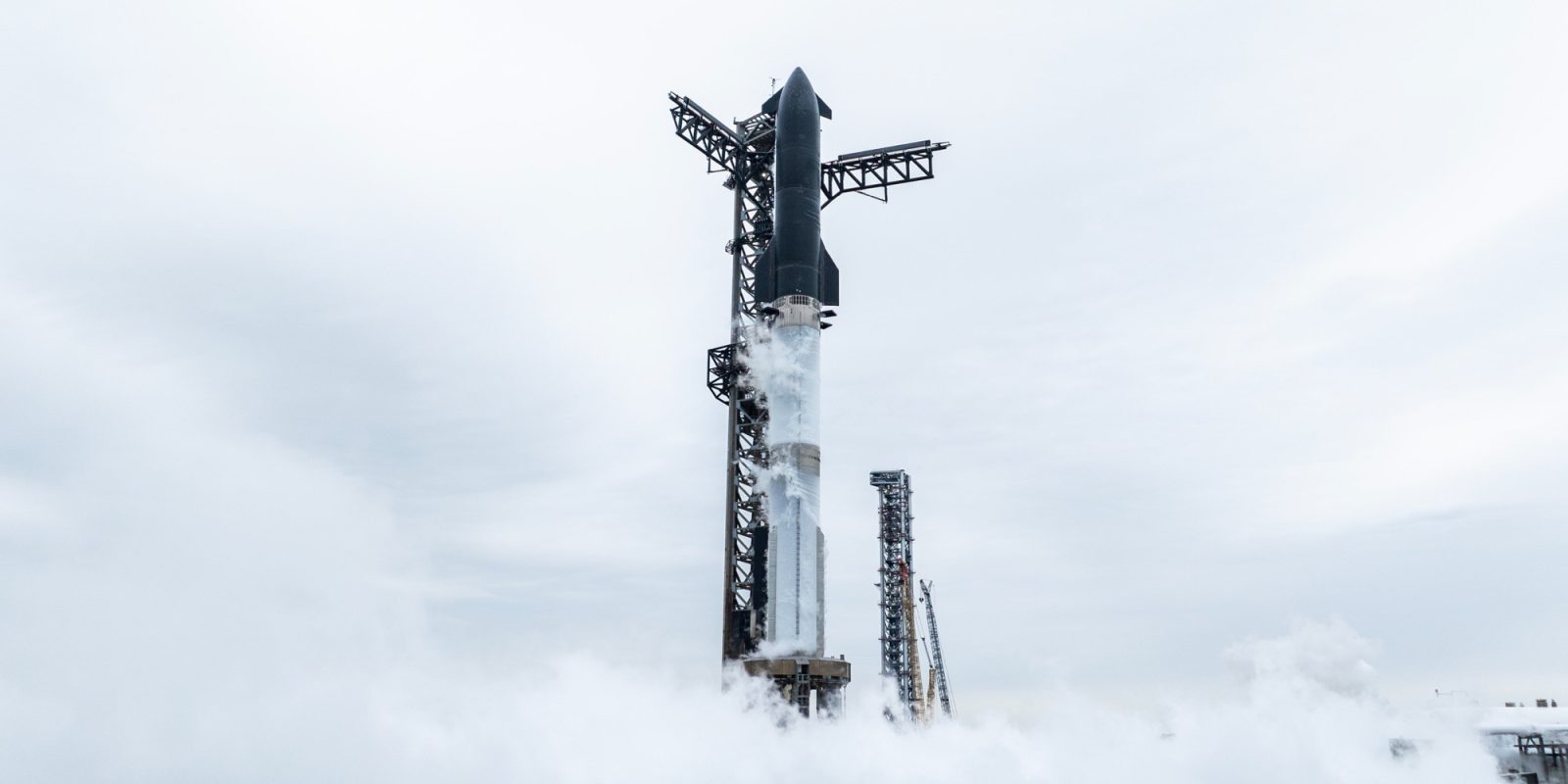
SpaceX is planning to attempt its seventh Starship launch this afternoon from Starbase, Texas. The mission will see many firsts and hopefully make a path forward for ship catches and reuse in the near future. Here is everything you need to know about Starship Flight 7.
Update: Starship Flight 7: SpaceX makes second booster catch, Block 2 Starship loss during ascent
Starship is still in development
Even though this will be this rocket’s seventh fully integrated launch, SpaceX’s Starship program is still in its development phase. Past successes don’t always mean more to come in the future. We saw this with Flight 6 when the tower aborted the catch attempt of the booster, even though Flight 5 saw a near-flawless catch.
When testing new technology, which a lot is on each Starship flight, anything can go wrong. Since the first flight and likely for a few more, the entire goal of Starship launches has been to gather data on how the rocket performs in flight.
So if you don’t see a successful landing or deployment of the satellites, don’t go well, the mission was not a failure.
New ship heat shield
The ship, or the upper stage, is of a new Block 2 design. Among other things, one of the changes made was to the heat shield. These tiles absorb the heat experienced during the ship’s reentry through Earth’s atmosphere. An important part if SpaceX ever wants to get one back to catch or re-fly.
The Block 2 ship also moves the forward flaps backwards, removing them from the bulk of the heating and simplifying the heat shielding in this area. Past flights have seen issues of some burn-through in these areas. The change is expected to remedy that.
Past flights have also seen the older tiles fall off. While the new tiles are expected to do that less, to ensure a continued safe reentry if that happens, SpaceX installed an ablative material beneath the tiles. So, if one falls off, the ship is still protected.
While this sounds like a perfect system, SpaceX is still testing potential future designs. Metal tiles have returned for more flight testing, and the company has even installed an “actively cooled” set of tiles. It’s unknown exactly how it’s cooled, either having a heat exchanger inside it or coolant expelled through small openings in the tile. Either way, it’s cool new technology for future ship designs.
Starlink dummy satellites
Outside of the Block 2 ship on this flight, what’s inside that ship is one of the bigger additions to Flight 7’s mission. SpaceX installed 10 Starlink pathfinder satellites into the ship’s payload bay to be deployed while in space.
The satellites will be on the same suborbital trajectory as the ship, so they will reenter over the Indian Ocean, likely burning up. The satellites also have no connectivity hardware onboard; the tests will be for Starship’s deployment system rather than Starlink’s service.
If this goes well, we will likely see third-generation Starlink satellites fly on Starship sometime this year when it achieves orbital flight. With each iteration of the satellites, they gain extra capabilities, making the Starlink internet service better.
If Flight 7 goes completely to plan, an orbital launch could be next.
How to watch Flight 7
SpaceX exclusively streams its launches on the social media platform X, which is owned by its CEO, Elon Musk. Since his acquisition, SpaceX streams on the platform have become the norm, and you’ll be able to find them on the company’s page.
If you’re looking for that big screen viewing experience and you can’t mirror your phone to the TV, X released their TV app last year, and it is available on most platforms.
SpaceX’s stream is expected to go live at T-35 minutes, so about 3:15 p.m. CT.
There are also outside streams that will cover the launch from different angles and will be much longer. Two we usually recommend are NASASpaceflight and Everyday Astronaut.
Another catch attempt and splash down
SpaceX will be hoping to attempt another catch of the Starship booster. Flight 5’s attempt, which was its first, shocked everyone when it happened, as many folks still couldn’t believe they would catch it instead of landing. Now that we know it’s possible, the challenge will be to make it repeatable.
For the ship, SpaceX will once again be conducting a soft landing at sea off the coast of Australia. However, future plans have it returning to Starbase for a similar catch like the booster receives. On Flight 7, SpaceX installed non-structural catch pins to test the aerodynamics and heating of them for future flights.
SpaceX’s goal is to launch as many as 400 Starship rockets over the next handful of years. In order to do that effectively, they will need to recover both vehicle segments and reuse them on future flights.
What’s to come next for Starship?
As we’ve hinted at throughout the article, the next steps for Starship are orbit and operational satellite deployments, likely Starlink V3. SpaceX is likely to receive approval from the FAA to increase its launch cadence in Texas to as many as 25 Starship launches a year.
The company seems confident that it can hit that number, which would mean launches every other week. However, it is more likely that they will reach 15 to 20 launches instead.
If all goes well, an orbital launch with a catch attempt is possible for Flight 8 per what Musk has said he wants out of future flights. However, data will have to be reviewed to ensure the vehicle can move forward with that step. Also, the FAA will likely need to be involved again to approve an orbital launch license modification.
As SpaceX says, whatever happens for Flight 7 or the future of Starship, excitement is guaranteed.
FTC: We use income earning auto affiliate links. More.




Comments